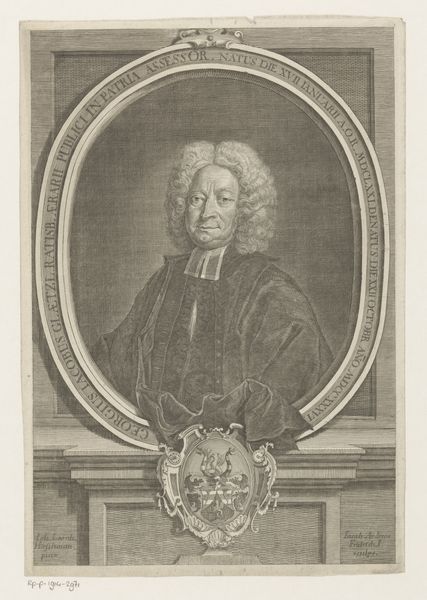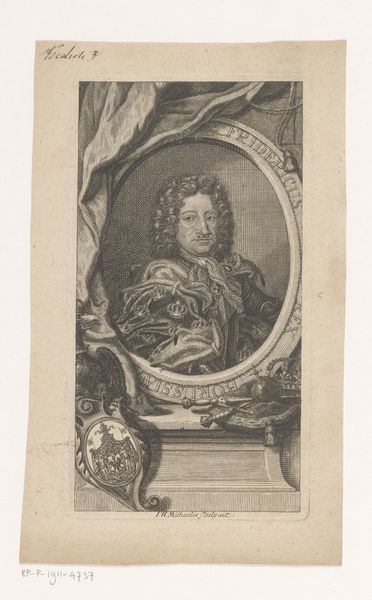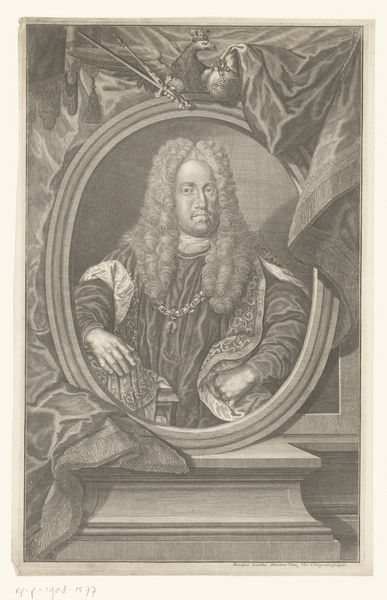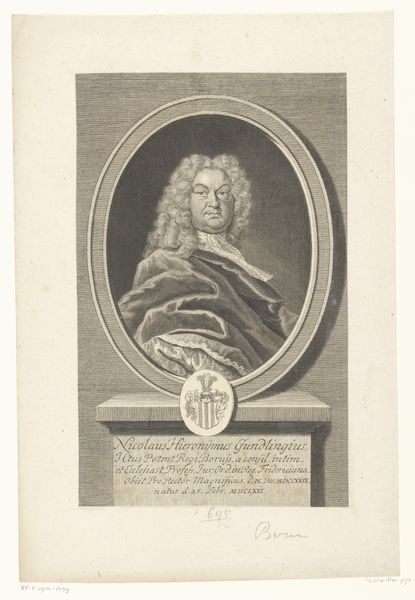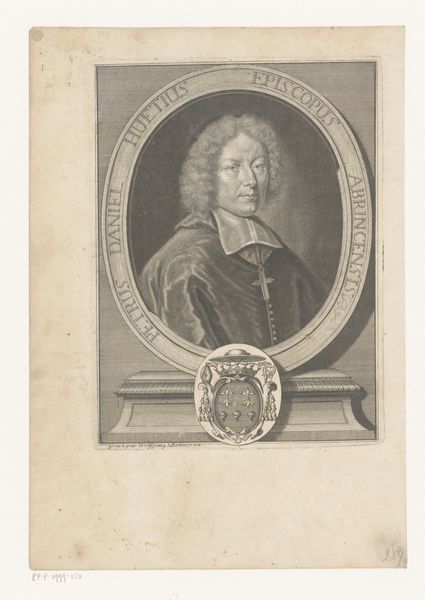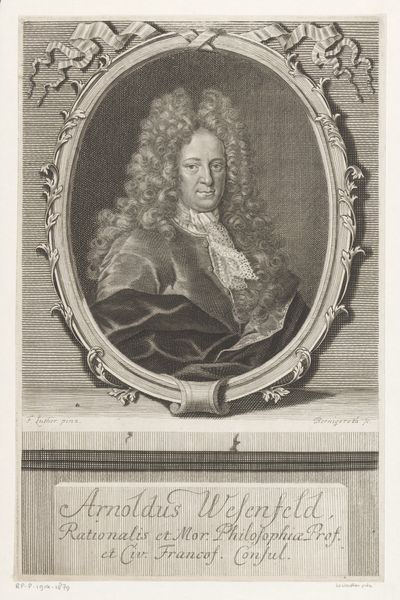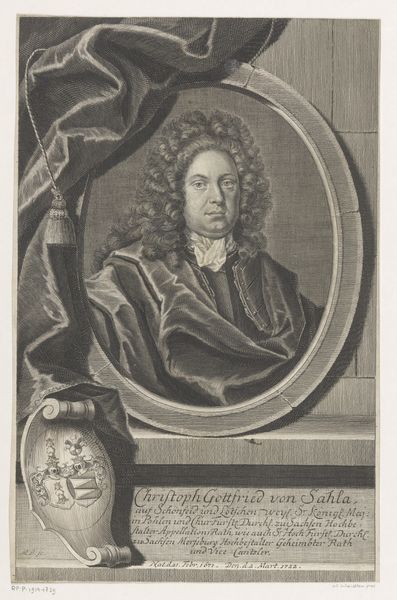
print, metal, engraving
#
portrait
#
baroque
# print
#
metal
#
old engraving style
#
history-painting
#
engraving
Dimensions: height 438 mm, width 273 mm
Copyright: Rijks Museum: Open Domain
Curator: This is a portrait of Emperor Charles VI, rendered in a style echoing Baroque sensibilities. Andreas Schmutzer likely created this sometime between 1710 and 1740. It is crafted through engraving, employing metal and printmaking techniques. Editor: It strikes me as incredibly formal, even austere, despite the wig and ornate details. The portrait has this almost…staged theatricality to it. I wonder what its purpose was. Curator: Beyond mere likeness, these portraits served as powerful tools of statecraft. Reproducible prints, such as this, circulated widely, broadcasting the image of the ruler and his authority. Note the symbolic objects surrounding Charles: the crown, scepter, all carefully positioned to reinforce his power. Editor: Right, but I’m curious about the material conditions. Consider the engraver’s role: the hours spent meticulously translating the grandeur of empire onto a metal plate. What would it have been like to produce this image, tasked with this delicate labor? Curator: The engraving process, you see, demanded exceptional skill and access to materials, linking its creation to particular workshops and economic structures. Furthermore, how were such prints consumed, traded, and by whom? Its accessibility, in a way, helped normalize this symbol of Imperial might across the realms. Editor: And it begs the question, what narratives are perpetuated, and which ones are obscured? Did its reach impact political dynamics in Austria and beyond? It's a very calculated distribution of a certain political power. Curator: Exactly! Its very creation and distribution becomes an act of cultural and political significance. In a way this helps us understand how history operates through such art forms. Editor: Indeed, and when viewed through the lens of labor, skill and the means for creation, the piece evolves, and one truly witnesses a tangible echo of early 18th-century power. Curator: A revealing and fitting perspective for examining Charles' representation, I believe.
Comments
No comments
Be the first to comment and join the conversation on the ultimate creative platform.



